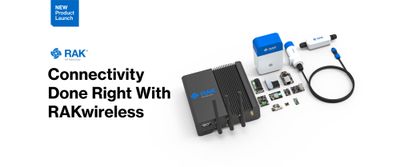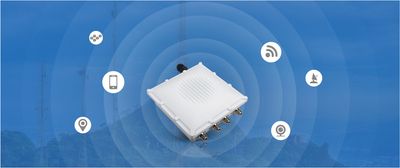Reactive vs Proactive: How IoT makes the former obsolete and the latter possible
Let us take at look at what the idea of technological adoption means for a society as a whole.
Broadly speaking there is a method used to provide better overall living to individuals. Advances in medicine and food production aim at giving one a more robust health. The transportation industry makes it easier to span great distances in order to transport goods and individuals. Electricity provides warmth, light, and comfort. Information technology gives us access to data that we can use to learn and better prepare to deal with our environment.
Ideally, it is all for the betterment of humankind. I mean pretty much everything is. Everything we do is in a way aimed at continuing our existence in a better setting. There are, however, technological advancements that are more meaningful and carry a larger impact on society. Thus, we develop technologies every day, make seemingly small incremental changes, improve upon existing ones, and develop new ones. When these pile up to a sufficient level, a paradigm shift happens and we are able to shift our perception and the way society operates into a new direction.

One such paradigm shift is about to be reached and it is a big one.
The way things operate for the most part now is in a reactive manner. People as individuals and society as a whole basically try to take in information about the surrounding environment and respond in a way that maximizes their chance of survival and improves their well-being. This is how it has been since the dawn of time, it is in our nature, and in the nature of the social constructs we have built over time.
Now, don't get me wrong this is a perfectly good approach and it has helped us survived over the ages, but it is not this that has put us at the top of the food chain. We are the dominant species on the planet, but not because of the way we react, rather because of the ability to be proactive.
Unlike most species we look further into the future – we plan. A lion does not stock up food, it eats when hungry, this is its reaction. Well it is not the king anymore. It got out-planned, by us.
Point is, we are where we are because we can envision and predict at least to some extent what is to be, based on what is. So we take in information and infer about upcoming events. However, this is only true for certain cases and it is not always accurate for two main reasons.
First, the informational input is limited. And second, our processing capabilities are limited. True, we have had systems to deal with this on our behalf for 10s of years now. Prediction models are not new, computing has been around for a long time.
In truth, the past decade was all about cloud computing, big data, and how to process the information gathered. We have become quite good at this as a matter of the continued work done on it. It is the time for shifting from the core to the edge again. The focus for the next 10 years will move to the edge, to the more efficient gathering of data, to increasing the data sets. Once this is done, we will cycle again, back to the core, etc.

This is what IoT is in a nutshell. All the different technologies, protocols, methods, and networks that work on a more efficient gathering of data from data points, some of which are a completely new type. Broadly speaking, IoT gives us the ability to monitor everything, all the time in order to have sufficient input for analysis. Thus, with such a large data set and the capability to process it, we will no longer need to react to changes, as we would control the environment proactively and to such an extent that there will be hardly any need for adjustment.
True, when put in such broad strokes, this might sound overwhelming and more than a little hard to believe. In reality, we are not so far away from what was just described. Let's look at two examples in order to gain a better understanding of the overall picture.
The first use case we are going to discuss has to do with the manufacturing industry. It is perhaps one that is less known to the public. However, it is also the one that dominates IoT applications as of now, the reason being that automation has been an integral part of the manufacturing industry for a long time, even before IoT existed as a concept. It is only natural that places where intense labor is performed, such as a factory, could benefit the most from automation as the amount of work that has to be done by humans can be significantly reduced. Up till now, this was mostly in the form of machines replacing human workers, doing various task with higher efficiency. Since IoT, has come into play the concept of Industry 4.0 has sprung to life.

By adding constant monitoring systems of sensors and actuators, any facility can be monitored 24/7. Furthermore, this monitoring process can be fully automated, removing the need for human involvement. Various sensors can monitor parameters of the equipment such as: temperature, mechanical stress, noise levels, current consumption, etc. This measured data can be plugged into predictive models and an estimate of the performance can be produced. Using the results, one can predict how long a machine would continue to operate incident-free, what its energy consumption is, how to optimize it, and determine potential output optimization, etc. In short, one does not need to wait for a visible result (worst case an incident) to take action and optimize production. This is as proactive an approach as it can be expected in such settings.
Another example would be smart agriculture and specifically irrigation systems. Water has always been a precious resource, and we can't produce more of it, we have as much of it as we are ever going to get, so we must use it sparingly.

Automated irrigation systems are not a novelty. However, smart irrigation systems are. It is no longer sufficient to set a cycle time and water a field over a preset time interval, we can now do better. Using a dense raster of battery-powered nodes it is possible to obtain real-time data on air temperature, humidity and pressure, soil moisture levels, the presence of rain or strong wind, etc. Using this input coupled with accurate weather data, it is possible to determine when the optimum time for watering crops is. This not only saves on precious water resources, but also reduces overall production cost and yield.
Furthermore, this data can be gathered long term and a statistical analysis can be produced. It is extremely valuable in predicting future crop yields and trends in developing certain cultures. Again, this allows farmers using smart agricultural techniques made possible by IoT solutions to take a proactive approach for 5+ years periods and have an accurate estimate of yields and production costs.
Read 3 ways IoT is Transforming The Agricultural Landscape
We might not be able to control the weather, but we can be prepared for it, both short and long term, so as not to sacrifice production.
Learn more on IoT Networks: Everything You Need to Know





